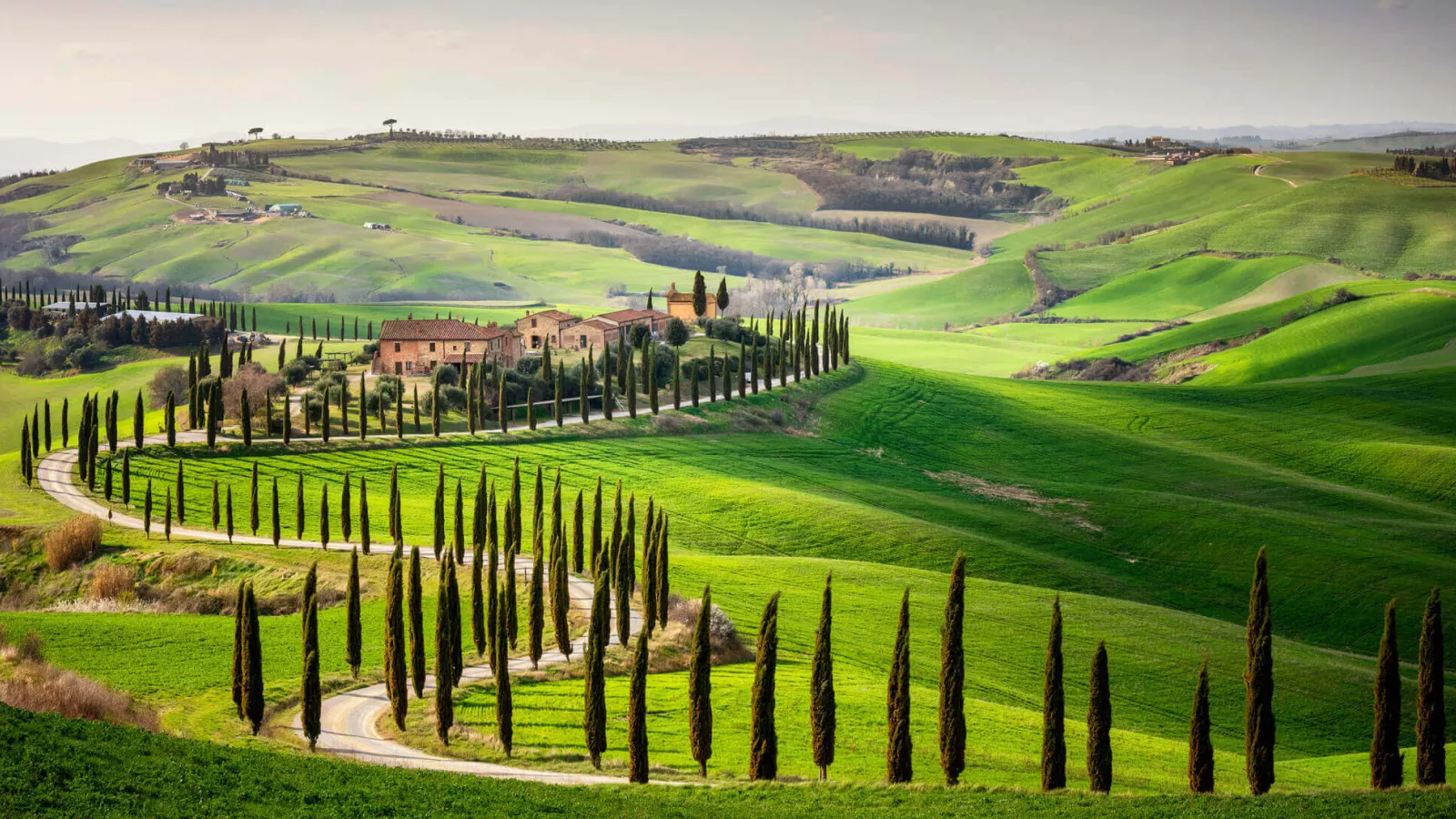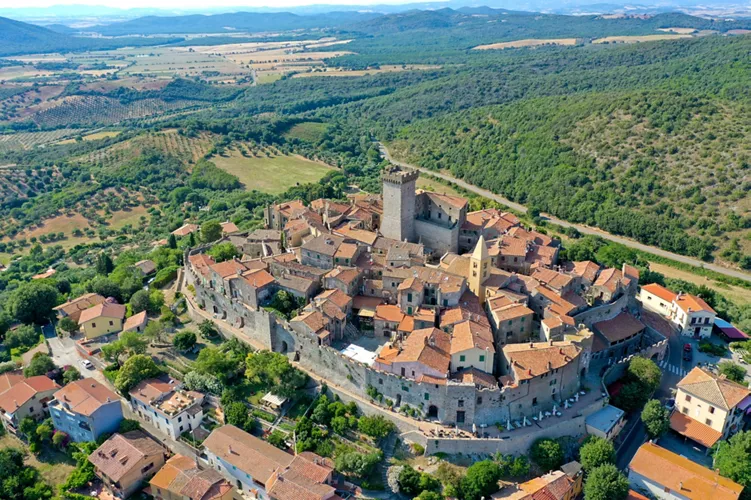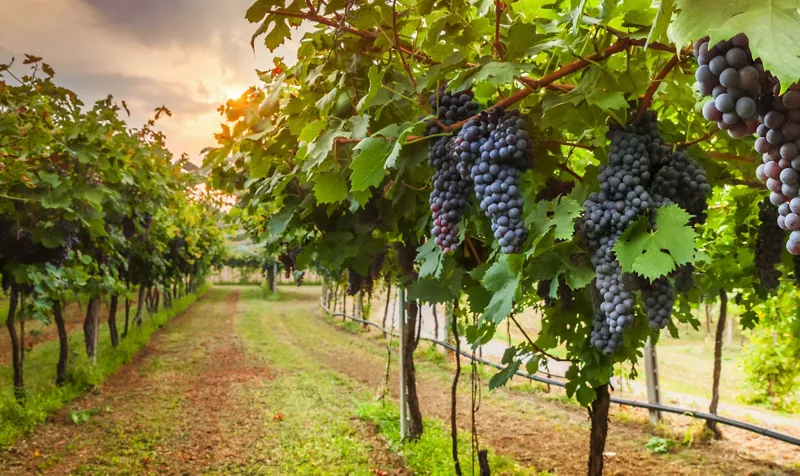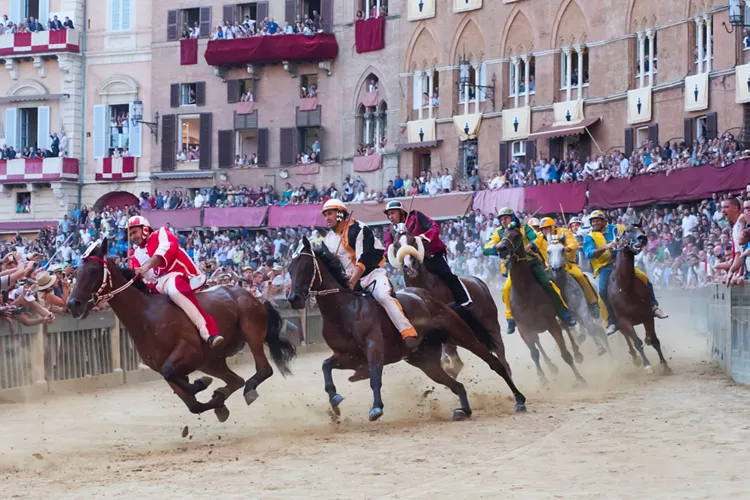Tuscany, unique landscapes, cities of art, thousand-year-old history, and fantastic food
Tuscany’s magical atmosphere evolves day by day as you stroll around the cities of art, cycle in the parks, enjoy the sea, or savor its typical products, in a region with a one-of-a-kind natural, cultural, and historical heritage that has fascinated visitors for centuries.
1. Origins and history of Tuscany

At the core of Italian and European economic and artistic development for centuries, the territory of Tuscany has been inhabited since the Palaeolithic period, but one of the most mysterious pre-Roman peoples to leave their mark was the Etruscans. After being conquered by the Romans and Byzantines, Tuscany fell into the hands of the Lombards who established a duchy with its seat in Lucca, until the intervention of Charlemagne.
The year 1000 onwards saw the development of the Maritime Republic of Pisa, with one of the most powerful naval fleets at the time, and castles were built in Tuscany for the control and defense of the fiefdom, including those of Monteriggioni and Volterra and the Castle of Poppi. On 11 June 1289, the Battle of Campaldino was fought there, which saw the Guelphs triumph over the Ghibellines.
This marked the beginning of Florence’s hegemony over Tuscany, with the Medici family remaining in power for almost 300 years from 1434.
From the cradle of the Renaissance, thanks to Lorenzo the Magnificent, to the Grand Duchy of Tuscany until 1859, Tuscany was also at the center of the newly formed Kingdom of Italy, with Florence as its capital until 1870.
2. Main cities in Tuscany

With nine provincial capitals and the metropolitan city of Florence, Tuscany is home to some of the most beautiful cities in Italy.
The region’s capital is an open-air museum, where you can stroll for days discovering architectural masterpieces, such as the Cathedral of Santa Maria del Fiore and the Ponte Vecchio (“Old Bridge”), as well as priceless works of art, including those on display at the Uffizi Gallery and Michelangelo’s David at the Accademia Gallery.
Siena will transport you to the Middle Ages, with its historic center branching out from the majestic Piazza del Campo.
The most iconic place in Pisa, near the Tyrrhenian coast, is the Piazza dei Miracoli, where you will find the Leaning Tower of Pisa, the Camposanto cemetery, the Baptistery of St. John, and the Pisa Cathedral.
Just above Pisa, surrounded by perfectly preserved medieval walls, is the charming city of Lucca, with a calendar full of events throughout the year.
Not forgetting the countryside, dotted with timeless villages such as San Gimignano, with its medieval towers towering over the landscape, and Pienza, a small jewel of the Val d’Orcia.
3. What to see in Tuscany

Throughout Tuscany, you will discover new treasures and beautiful sites around every corner, such as the Val d’Orcia, in the heart of the province of Siena, with its rolling hills and picture-perfect colors that change with every season.
Equally impressive is the Maremma, which stretches between the provinces of Grosseto and Livorno, with breathtaking coastlines and Mediterranean vegetation. From there, you can reach Monte Amiata, where you will find the 22-meter monumental cross built to celebrate the Holy Year of 1900 on its summit.
North of Florence lies the Mugello valley, full of traces left by the Etruscans to explore after stopping by the Medici Chapels in the heart of Florence.
Anyone who loves the sea will be spoiled for choice between kilometers of coastline and the small Tuscan jewels in the Tyrrhenian Sea, the Island of Elba in the Gulf of Follonica, and the Island of Giglio opposite the Argentario Promontory.
4. Unusual places in Tuscany

If you are looking for unusual places off the beaten tourist track, we recommend starting at the Tarot Garden, an art park in Capalbio home to large, extravagant tarot-inspired sculptures.
In Peccioli, you will find the charm of medieval Tuscany combined with the conceptuality of contemporary art.
The Etruscan Vie Cave will catapult you into a fairy-tale landscape among paths carved into the tuff and mysterious engravings, while from 2023 in the province of Lucca you can walk through Fabbriche di Careggine, a ghost town submerged since 1947 by the waters of Lake Vagli that periodically resurfaces for maintenance work on the hydroelectric dam.
The Abbey of San Galgano, abandoned since the late 18th century, makes for a perfect out-of-town excursion after discovering the Siena Bottini, the ancient aqueducts beneath the city.
5. Typical products of Tuscany

Tuscany’s history, art, and culture are linked to a long tradition of food and wine, starting with world-famous wines, such as the white Chianti wine, Vino Nobile di Montepulciano, and Vernaccia di San Gimignano.
Tuscan bread goes perfectly with the region’s typical cured meats, such as Lardo di Colonnata, from the province of Massa-Carrara, and Finocchiona, which you can taste throughout the region along with Tuscan Pecorino cheese.
Fiorentina steak is a masterpiece that you can enjoy not only in Florence, but in the Pistoia area you will find Sorana beans, which have a unique flavor thanks to the extraordinary local microclimate.
6. Events in Tuscany

Tuscany welcomes visitors all year round with events such as the iconic Palio of Siena, which on 2nd July and 16th August each year since 1644 has seen the 17 districts compete in an equestrian joust in the picturesque Piazza del Campo.
The Carnival of Viareggio has been held since 1873, with a traditional parade of floats among the biggest and most dynamic in the world.
If you love live music, be sure not to miss the Maggio Musicale Fiorentino (Florence Musical May) festival, with a mix of operas, concerts, and ballets between the end of April and the beginning of July in the most impressive locations across Florence.
While in the capital, check out the Tournament of Historical Florentine Football to see the city’s four districts go head-to-head in what is considered the predecessor of modern football.
Last but not least, the Lucca Summer Festival in July transforms the city of Lucca into a musical arena, a popular stop for renowned singers on European tours.

